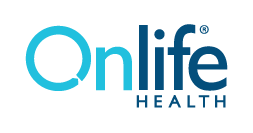Apr 2023 Incentivize Life-Long Healthy Habits for Health Plan Members
How Your Health Plan Can Reward and Reinforce Healthy Choices and Behaviors

We are all creatures of habit. Almost half of daily human behavior is habitual. As a result, habits can be powerful factors working for or against the health of your members. Changing a person’s behavior is a difficult task. That’s great if the person is in a healthy routine, but it’s a less fortunate reality when trying to address unhealthy habits.
Incentives are one of the most popular methods health plans and employers use to overcome the inertia of unhealthy habits and motivate their members and employees to adopt healthy behaviors. Almost 70 percent of employers offer financial incentives to participate in well-being activities, with a median per-employee incentive of $600. The reason is simple: incentives work.
Studies have shown that employers offering well-being programs that include incentives enjoy a 22 percent higher participation rate than employers who don’t. At Onlife Health, our incentive programs have produced even better results. For example, wellness challenges with incentives produced a 39 percent participation rate for one client compared to just a nine percent participation rate for wellness challenges without incentives.
However, not all incentive programs are successful. Generating a high level of participation requires strategic planning, careful execution, constant monitoring, and an ability to quickly adjust the program to evolving events. Based on over two decades of experience developing and executing incentive programs with clients, we’ve identified four key steps for success.
GET PERSONAL
To ensure a successful incentive program, you must first tailor your approach to fit your organization and your specific needs. The questions that need to be answered include:
- What type of incentives should be offered?
- What behaviors and activities should the incentives reward?
- What incentive value should each behavior or activity receive?
- How can the incentives be structured to encourage healthy actions throughout the year and not just during the beginning of each quarter or year?
- What’s the best way to verify the activity?
- What is the best combination of financial and non-financial incentives that will optimize participation?
- How do we accurately predict the cost of the incentive program?
- What’s the best way to provide ongoing motivation until the member becomes self-motivated and the habit “sticks”?
TAP THE EXTERNAL AND THE INTERNAL
Experts believe it takes at least 66 days to establish a new habit. During this critical period, two types of motivation are needed: extrinsic and intrinsic. Incentives serve as extrinsic motivation. But equally important is intrinsic motivation, the satisfaction that each person derives from participating in an activity they find inherently interesting and enjoyable. A combination of both extrinsic and intrinsic motivation provides the highest possibility of maximizing sustained engagement.
Offering a variety of incentives allows people to choose the one incentive that best matches their intrinsic motivation. The possibilities are almost endless. For example, an incentive can reward people who are more socially minded for being a volunteer or participating in community service. Incentives that address financial wellness, such as financial education courses, can meet people at a specific point of need. And one intrinsic motivation that appeals to almost everyone is to include family members in an incentive activity.
GO WITH THE FLOW
Your incentive program should have the flexibility to allow for adjustments based on what’s working and what’s not and move your program forward. For example, once an incentive program achieves its initial enrollment goal, the following adjustments can be made to shift the focus of the program from initial to sustained engagement:
- Give more weight to activities that encourage active ongoing participation (e.g., coaching, use of trackers, challenges, and device integration).
- Increase the incentive values for coaching and weekly device/app use while removing or decreasing the values for device connection.
- Change the incentives structure from participation based to results-based.
MAXIMIZE YOUR RETURNS
One of the challenges you’ll face when designing an incentive program is calculating the correct incentive budget—one that offers enough financial motivation to increase employee engagement while still providing a high return on investment. It’s a difficult balance. Once the budget is set, you don’t want to become a victim of your own success and end the program because funds run dry. Likewise, you don’t want to leave budgeted dollars on the table, a sign of lower-than-expected engagement. Monitoring participation rates and tracking payments provides the information needed to forecast and manage incentive costs and then make the necessary adjustments that help ensure the program remains within budget.
FINAL THOUGHTS
If you stay aligned with organizational priorities while never losing sight of what individuals want and the right next thing they should do, you are on your way to effectively using incentives to drive healthy outcomes.
Want to learn more about structuring an incentive program that results in healthier habits for
your members? Contact us today for a 1:1 session.

